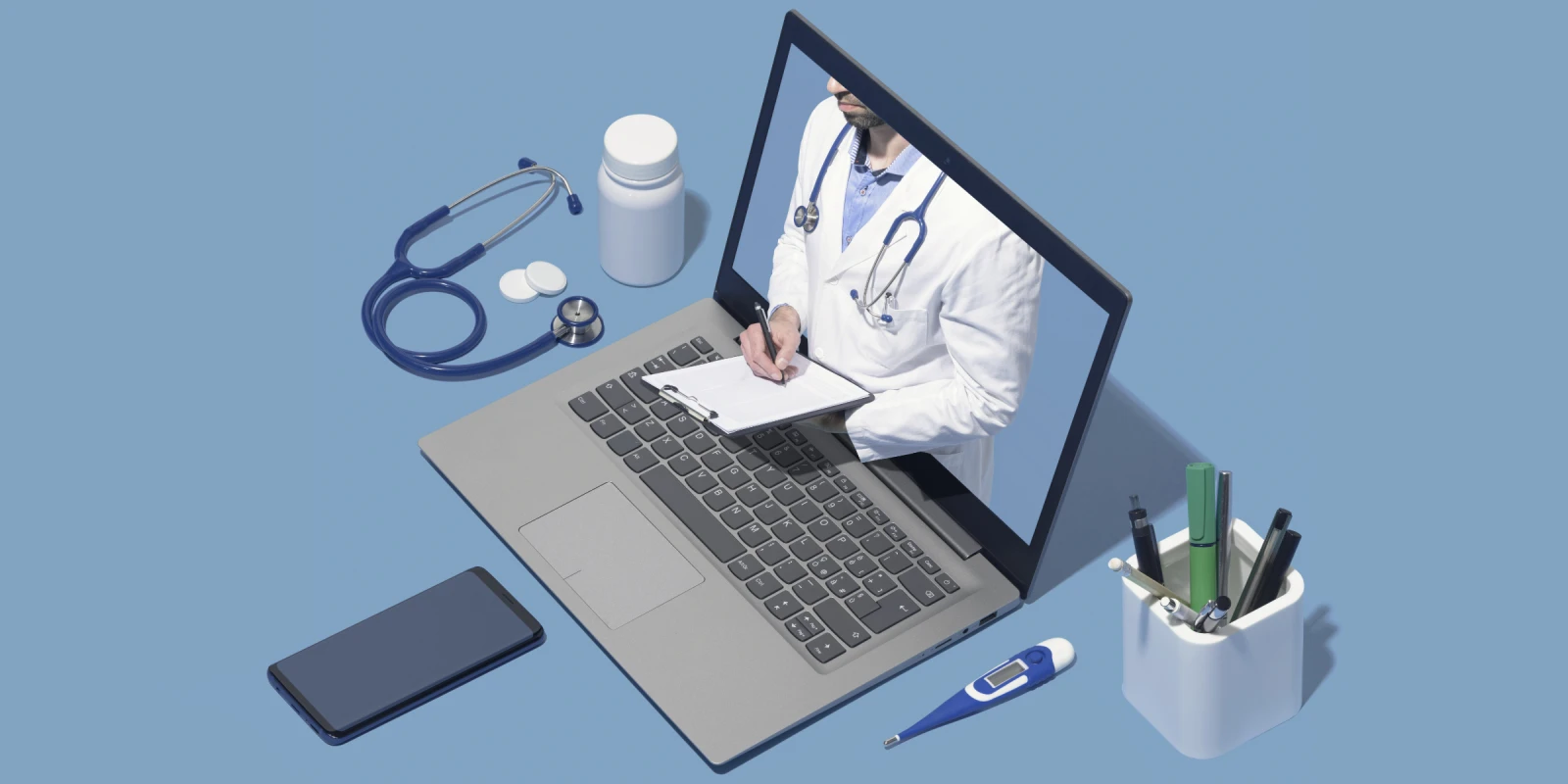
The American Cancer Society predicts that this year, 96,480 people will be diagnosed with melanoma and of those, 7,230 will die. The earlier it’s found, the more likely it is to be cured. And while melanoma can be found in any region of the US, access to a dermatologist is not as universal. Because of unequal provider distribution, there is disparity in the stage at which skin cancers like melanoma are diagnosed across geographical and socio-economic levels. Teledermatology can be a way to provide some parity in the identification of this disease.
Remote evaluation of complaints, whether dermatological or otherwise, is increasingly ubiquitous across the U.S. In a store-and-forward (SAF) model, primary care providers photograph and upload images of a patient’s lesion to an online portal. A dermatologist then reviews those images at a later time and sends back a consultation.
Many studies have addressed the wait times associated with SAF technology versus face-to-face (F2F) appointments (6,7,8,21). These studies all discuss how SAF models eliminate travel to and from appointments, significantly reducing the time between discovery and appointment access. This type of advancement may lead to a decrease in mortality provided it is both widely available to at-risk populations and is integrated with providers’ EMRs (4). Reduced wait times from SAF thereby offer more timely triage, identification, and treatment of cancerous lesions (7).
The availability of telederm evaluation is both a strength and weakness. In 2011, $719 million was spent on mobile health (20). With that ubiquity comes a spectrum of quality as there is no regulatory oversight. Even the verbiage for what teledermatology actually encompasses is vague. Some use “macro images” which involve no magnification. Others use attachments which utilize polarized light. Some involve the review of the image by a dermatologist, while others compare images to databases of past images. One study aimed to specifically assess SAF which utilized only smartphone cameras with no dermoscopy and found results “highly variable” (20). It was reported that this type of discrepancy disproportionately affects those of poorer socioeconomic demographics because of the low or no cost availability of these types of apps.
Many people feel F2F visits are costly and time consuming. Teledermatology claims to be an option for those whose aim is to reduce mortality from melanoma through increased access for underserved populations. Teledermatology costs would have to increase by 9.3 times to equal that of a conventional dermatology appointment (2) and a 74% reduction in in-person appointments and provides an 18% cost reduction compared to F2F appointments (1). But, this has been disputed by others who find that while SAF technology reduces costs for patients, this doesn’t necessarily lead to savings for health care at large. There is often redundancy between these models where patients often get a SAF consult plus a F2F appointment, leading to “slower care at increased cost” (11). In other work, “photo triage” is “marginally cheaper” than a traditional consult (14).
Another criticism of SAF platforms is the lack of a Total Body Skin Examination (TBSE). One study contends that over one third of melanomas would not have been identified had TBSE not been performed (1). Since SAF is a targeted procedure, it images a small fraction of a patient’s total body surface area. This leaves a lot of skin not assessed. Viola et al. report a “substantial proportion” of cancerous lesions were identified as part of a TBSE, citing 55% of malignancies found were incidental (18).
A thread seen repeatedly in the literature is the use of teledermatology as “triage” versus “identification” or “diagnosis.” Triage in this context is the ability to correctly say “this is not cancer” whereas identification says “this is melanoma.” Of the studies reviewed, there was conflicting evidence reported concerning the diagnostic accuracy of SAF while the sensitivity of triage was widely agreed to be high.
JAMA Dermatology’s 2017 systematic review of 21 studies concluded that F2F continues to have a higher correct identification of cancerous lesions confirmed via histology than SAF (7). They go on to say that many of the studies reviewed have limitations in their methodology which erroneously allow them to claim an artificially high identification rate of SAF vs F2F. From this data, they move on to advocate for SAF as a triage method, concluding that evidence supports teledermatology as a “triage tool” because of a dearth of evidence showing its diagnostic ability (7).
The difficulty in comparing these two modalities is that it’s not always about choosing between F2F versus SAF, but rather SAF versus nothing. For many, without services like innovative SAF modalities, they would have no evaluation at all. While the quantifiable results for SAF’s effect on melanoma mortality have not been shown, it certainly has potential. As technologies like these continue to evolve, hopefully the access to high quality services will continue to grow with it.
References
- Aldridge, R. B., Naysmith, L., Ooi, E. T., Murray, C. S., & Rees, J. L. (2013). The importance of a full clinical examination: assessment of index lesions referred to a skin cancer clinic without a total body skin examination would miss one in three melanomas. Acta Dermato-Venereologica, 93(6), 689-692. doi: 10.2340/00015555-1625
- Armstrong, A.W., Dorer, D.J., Lugn, N.E., & Kvedar, J.C. (2007). Economic evaluation of interactive teledermatology compared with conventional care. Telemedicine and E-health, 13(2). doi: 10.1089/tmj.2006.0035
- Arzberger, E., Curiel-Lewandrowski, C., Blum, A., Chubisov, D., Oakley, A., Rademaker, M., Soyer, H.P., & Hoffmann-Wellenhof, R. (2016). Teledermoscopy in high-risk melanoma patients: a comparative study of face-to-face and teledermatology visits. Acta Dermato-Venereologica, 96, 779-783. doi:10.2340/00015555-2344
- Bruce, A. F., Mallow, J. A., & Theeke, L. A. (2018). The use of teledermoscopy in the accurate identification of cancerous skin lesions in the adult population: A systematic review. Journal of telemedicine and telecare, 24(2), 75–83. doi:10.1177/1357633X16686770
- Coates, S.J., Kvedar, J., & Granstein, R.D. (2015). Teledermatology: from historical perspective to emerging techniques of the modern era. American Academy of Dermatology 72, 563-574. doi: 10.1016/j.jaad.2014.07.061
- Ferrándiz, L., Ruiz-de-Casas, A., Martin-Gutierrez, F.J., Peral-Rubio, F., Mendez-Abad, C., Rios-Martin, J. J., Moreno-Ramirez, D. (2012). Effect of teledermatology on the prognosis of patients with cutaneous melanoma. Archives of Dermatology,148(9), 1025–1028. doi:10.1001/archdermatol.2012.778
- Finnane, A., Dallest, K., Janda, M., and Soyer, H.P. (2017). Teledermatology for the diagnosis and management of skin cancer. Journal of the American Medical Association, 153(3), 319-327. doi: 10.1001/jamadermatol.2016.4361
- Fludional, N., Lu, J., Porto, A., Villagra, J., Zhao, H., & Anderson, D. (2018). Impact of dermatology eConsults on access to care and skin cancer screening in underserved populations: A model for teledermatology services in community health centers. Journal of the American Academy of Dermatology, 78(2) 293-302. Retrieved from https://doi.org/10.1016/j.jaad.2017.09.017
- Halpern, S. M. (2010). Commentary: Does teledermoscopy validate teledermatology for the triage of skin lesions? British Journal of Dermatology, 162, 709-710. doi: 10.1111/j.1365-2133.2010.09739.x
- Kroemer, S., Fruhauf, J., Campbell, T.M., Massone, C., Schwantzer, G., Soyer, H.P., & Hoffman-Wellenhof, R. (2011). Mobile teledermatology for skin tumour screening: diagnostic accuracy of clinical and dermoscopic image tele-evaluation using cellular phones. British Journal of Dermatology, 164, 973-979. doi: 10.1111/j.1365-2133.2011.10208.x
- Landow, S., M., Mateus, A., Korgavkar, K., Nightingale, D., & Weinstock, M., A. (2014). Teledermatology: Key factors associated with reducing face-to-face dermatology visits. Journal of the American Academy of Dermatology, 71(3), 570-576. Retrieved from https://doi.org/10.1016/j.jaad.2014.02.021
- Markun, S., Scherz, N., Rosemann, T., Tandjung, R., & Braun, R. P. (2017). Mobile teledermatology for skin cancer screening: A diagnostic accuracy study. Medicine, 96(10), e6278. doi:10.1097/MD.0000000000006278
- Massone, C., Maak, D., Hofmann-Wellenhof, R., Soyer, H.P., & Fruhauf, J. (2014). Teledermatology for skin cancer prevention: an experience on 690 Austrian patients. Journal of the European Academy of Dermatology and Venereology, 28, 1103-1108. doi: 10.1111/jdv.12351
- Morton, C. A., Downie, F., Auld, S., Smith, B., van der Pol, M., Baughan, P., Wells, J., & Wootton, R. (2010). Community photo-triage for skin cancer referrals: An aid to service delivery. Clinical and Experimental Dermatology, 36, 248-254. doi:10.1111/j.1365-2230.2010.03960.x
- Price, T. (2017). Here’s what’s so great about community health centers. US Department of Health and Human Services. Retrieved from https://www.hhs.gov/blog/2017/08/18/heres-whats-so-great-about-community-health-centers.html
- Shapiro, M., James, W.D., Kessler, R., Lazorik, F. C., Katz, K. A., Tam, J., Nieves, D. S., & Miller, J. J. (2004). Comparison of skin biopsy triage decisions in 49 patients with pigmented lesions and skin neoplasms: Store-and-forward teledermatology vs face-to-face dermatology. Archive of Dermatology, 140(5):525–528. doi:10.1001/archderm.140.5.525
- Tensen, E., van der Heijden, J.P., Jaspers, M.W.M. (2016). Two decades of teledermatology: Current status and integration in national healthcare systems. Current Dermatological Reports, 5(2), 96-104. Retrieved from https://doi.org/10.1007/s13671-016-0136-7
- Viola, K.,V., Tolpinrud, W. L., Gross, C. P., Kirsner, R. S., Imaeda, S., & Federman, D. G. (2011). Outcomes of referral to dermatology for suspicious lesions: Implications for teledermatology. Archives of Dermatology,147(5):556–560. doi:10.1001/archdermatol.2011.10
- Warshaw, E. M., Lederle, F. A., Grill, J.P., Gravely, A. A., Bangerter, A. K., Fortier, L. A. … Nelson, D. B. (2009). Accuracy of teledermatology for nonpigmented neoplasms. American Academy of Dermatology, 60(4), 579-588. Retrieved from https://doi.org/10.1016/j.jaad.2008.11.892
- Wolf, J.A., Moreau, J.F., Akilov, O., Patton, T., English, J. C., Ho, J., & Ferris, L. K., (2013). Diagnostic inaccuracy of smartphone applications for melanoma detection. JAMA Dermatology, 149(4), 422–426. doi:10.1001/jamadermatol.2013.2382
- Wong, C. & Colven, R. Curr Derm Rep (2019). Teledermatology in underserved populations. Current Dermatology Reports. 1-7. Retrieved from: https://doi-org.ezproxymcp.flo.org/10.1007/s13671-019-0260-2
Brian Headley is a PA and Telemedicine Director for Lynn Community Health Center since 2016 where he works with several vendors to trial both synchronous and SAF platforms. When not at work, he enjoys traveling and fishing off his houseboat in Beverly.





